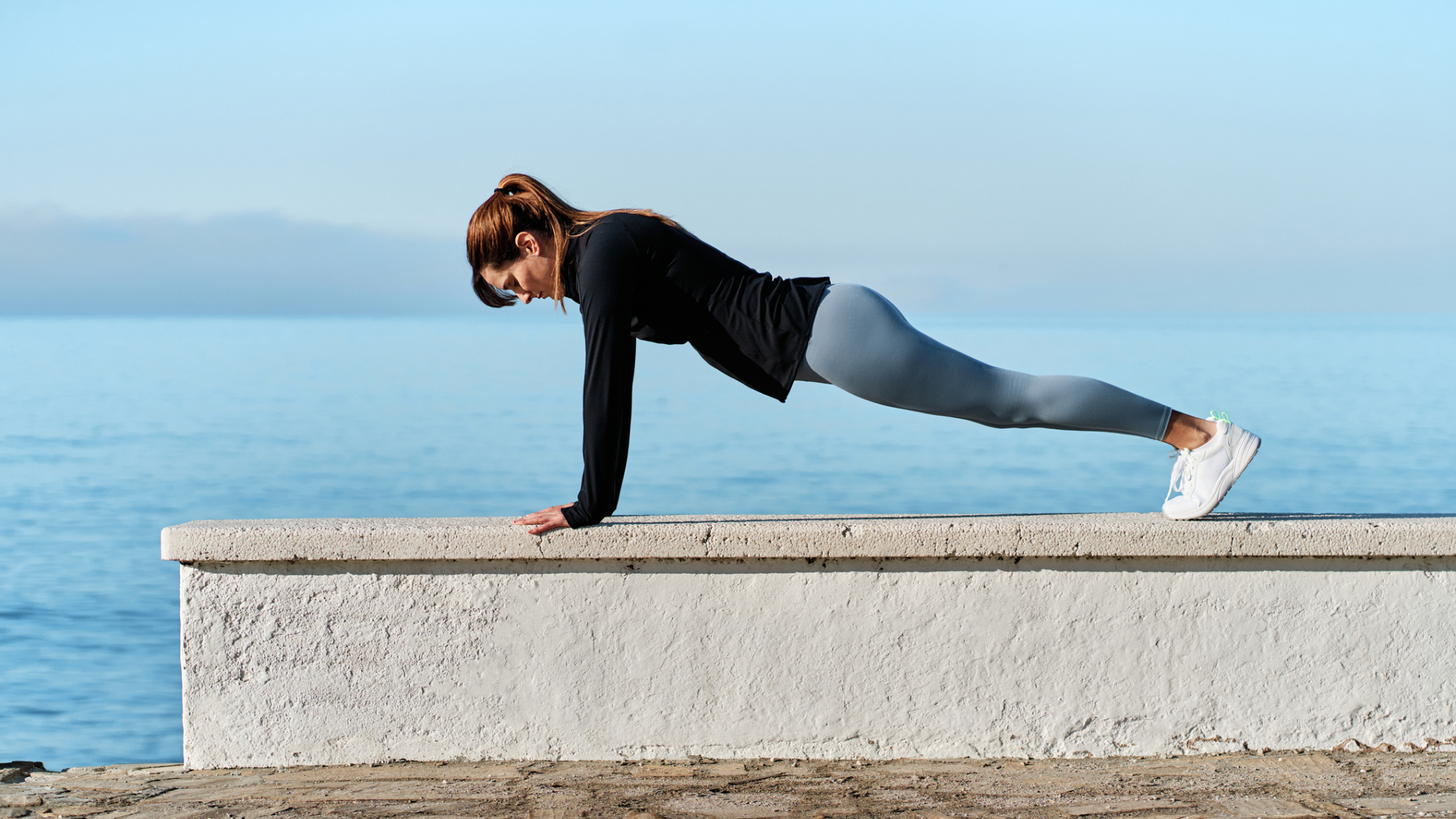
A good home workout can be just as effective as a sweaty training session in the gym. It's also more convenient, which makes it a better option for a lot of people.
"The most important factor when working out successfully is whether or not your workouts are a good fit for you," says certified strength coach Domenic Angelino, from the Trainer Academy.
"If you can figure out how to exercise in a way that's easy enough and convenient enough for you to stick with, you will make progress in the long-term."
To help you get started, he's shared a seven-move bodyweight workout which doesn't require any equipment. There's a warm-up and cool-down included, so all you have to do is slip into some exercise clothes and get stuck in.
Warm-up
- 5 minutes of jogging, jumping jacks or speed walking
- Forward arm circles x8
- Backwards arm circles x8
- Arm hugs x8
- Forward swinging legs x8
- Lateral swinging legs x8
- Knee hugs x8
The aim of a warm up is to "increase your body temperature without actually fatiguing you," so Angelino recommends doing the exercises until you start sweating.
"This is a good indicator of your body reaching the appropriate temperature to train at, because your body produces sweat when it’s suddenly too hot," he explains.
Follow this with the dynamic stretches listed above, then you're ready to begin.
How to do Domenic Angelo's bodyweight workout
- Backwards lunge: 4x10 each side
- Lateral lunge: 4x12 each side
- Squat: 4x15
- Push-up: 4x10
- Diamond push-up: 4x12
- Mountain climber: 4x15 each side
- Plank: 4x30 seconds
Angelino's workout starts with three compound exercises that target the lower body, as these are "generally best to do first given the large number of muscles involved".
This is followed by two upper body exercises and a mini two-move abs workout to finish.
The exercises are performed in straight sets, so you'll complete each one for four rounds with a 30-60 second rest between before moving on to the next exercise.
Angelino also varies the number of repetitions you'll do for each exercise, "because training with different amounts of reps can offer different benefits".
Higher rep ranges develop muscular endurance (how long your muscles can keep going), while lower rep ranges will boost your strength levels (how heavy you can lift in general).
If you want to make this workout more challenging, Angelino suggests holding a pair of dumbbells (or adjustable dumbbells) during the lower body exercises. You can also swap the diamond push-ups for a close-grip dumbbell bench press.
1. Reverse lunge
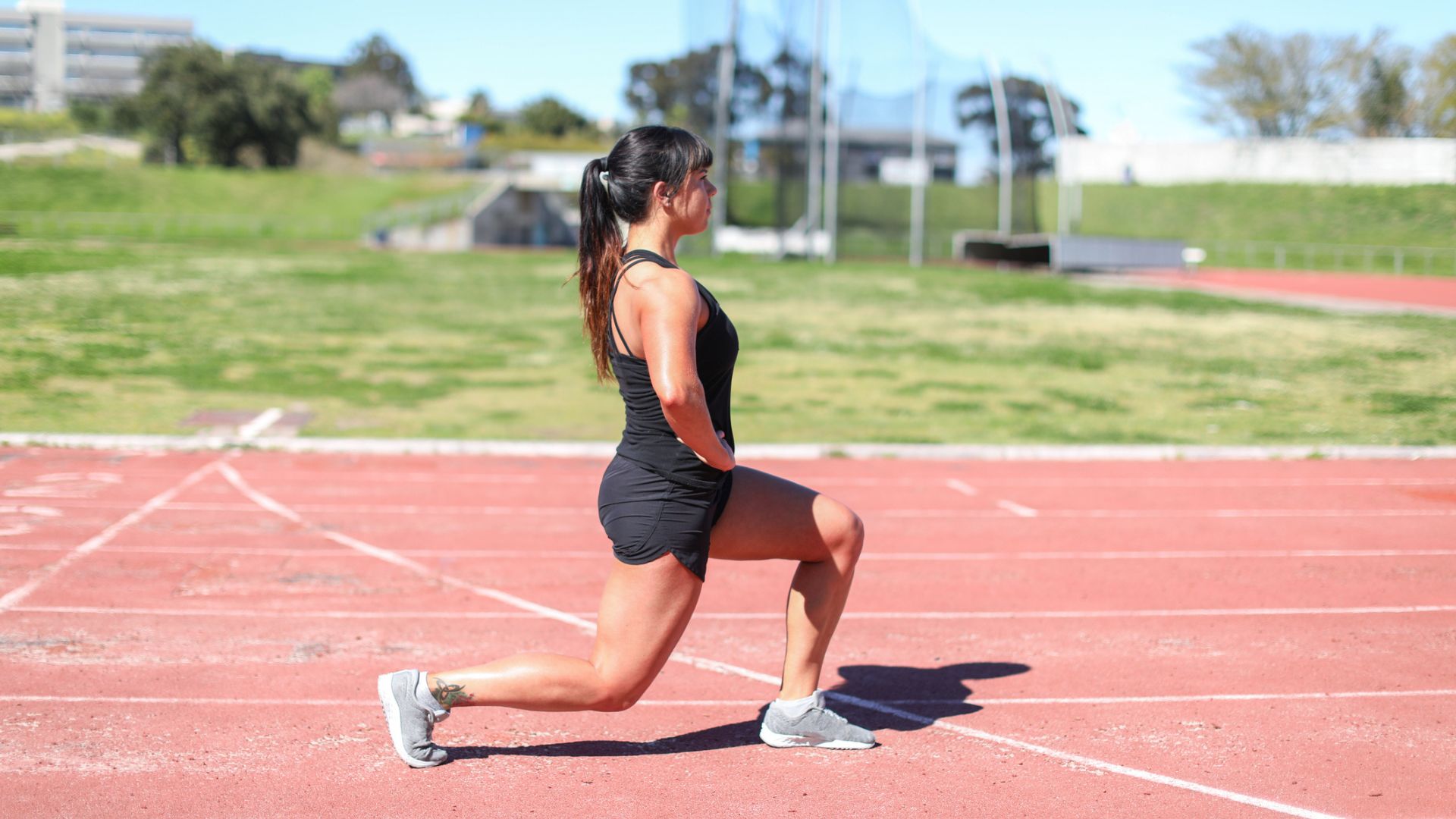
Sets: 4 Reps: 10 each side
- Stand upright with your feet hip-width apart.
- Step backwards with your right leg and lower your right knee towards the ground until both of your knees roughly form right angles.
- Drive through your left foot to return to the starting position, then repeat on the other side.
2. Lateral lunge
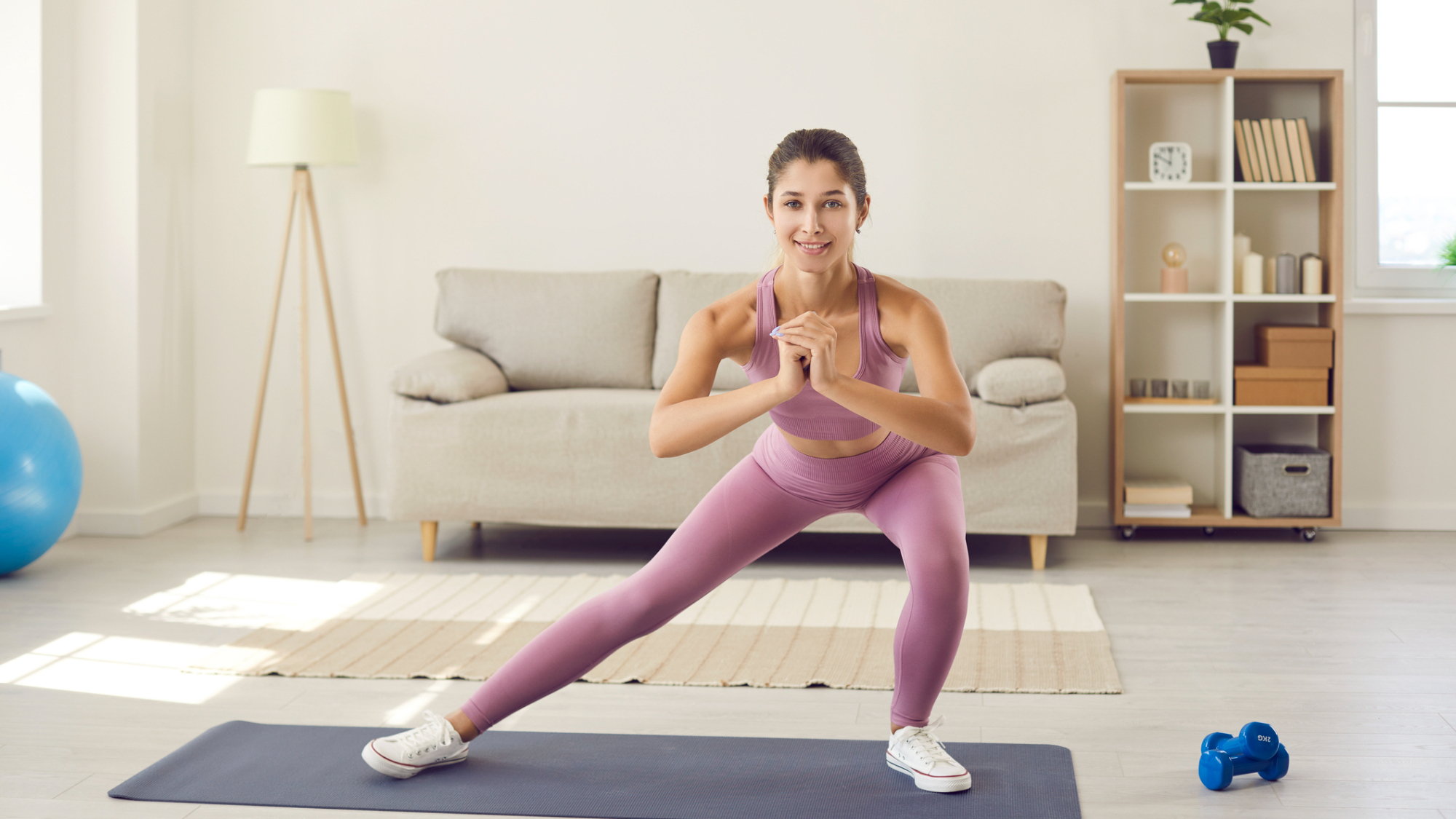
Sets: 4 Reps: 12 each side
- Stand upright. Keeping your chest up and your torso facing forward, step your right foot out to the side.
- Keeping your left leg straight, bend your right knee to sink down until your right thigh is parallel with the floor.
- Drive through your foot to push yourself back up so you're standing upright again. Repeat on the other side.
3. Squat
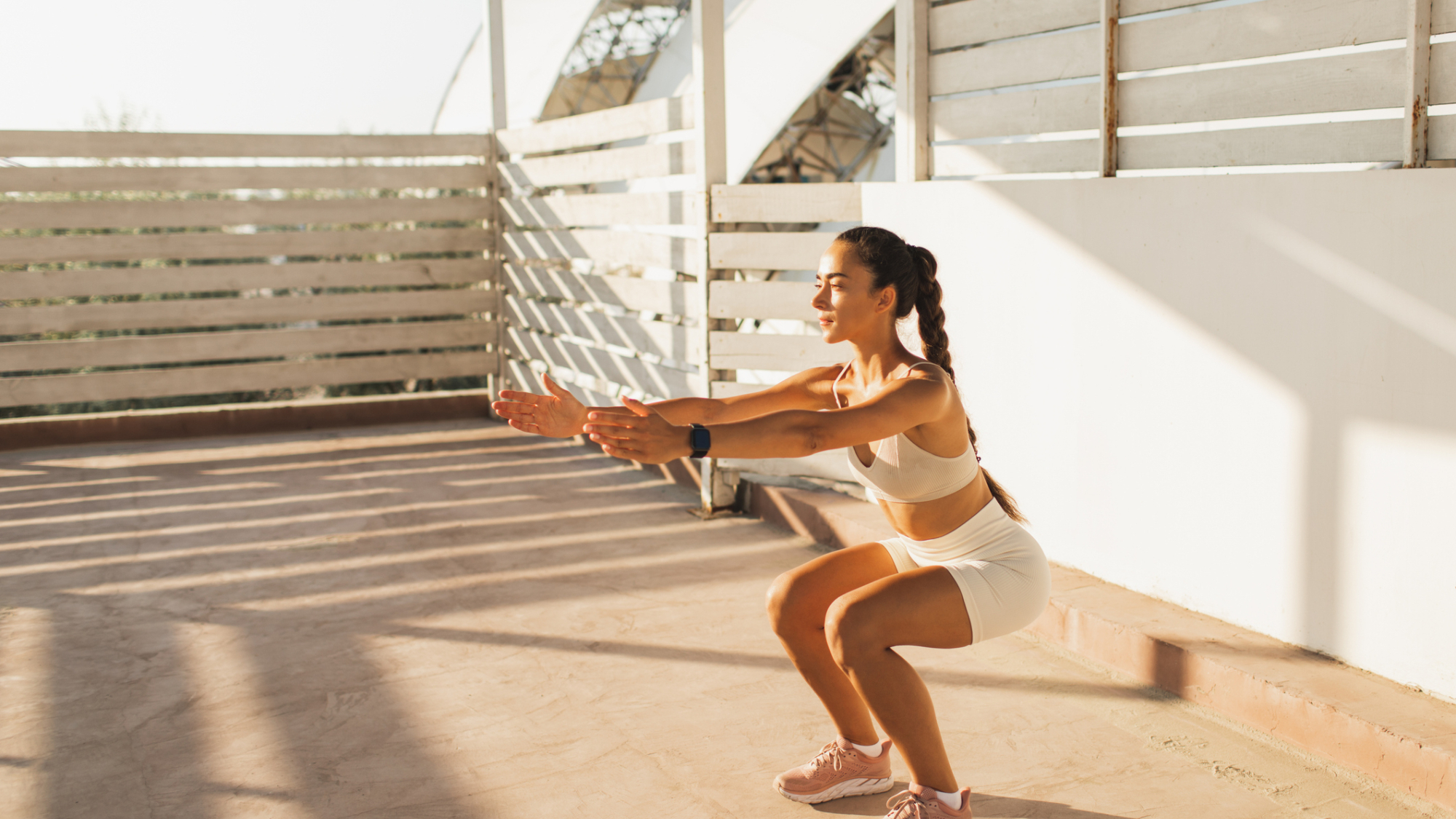
Sets: 4 Reps: 15
- Stand upright with your feet a little beyond hip-width apart and your toes pointed outwards slightly.
- Keeping your chest up, push your hips back then lower them towards the floor like you were sitting down in a chair behind you. Continue to sink lower into the squat until your thighs are at, or just beyond, parallel with the ground.
- Drive through your feet to return to the starting position.
4. Push-up
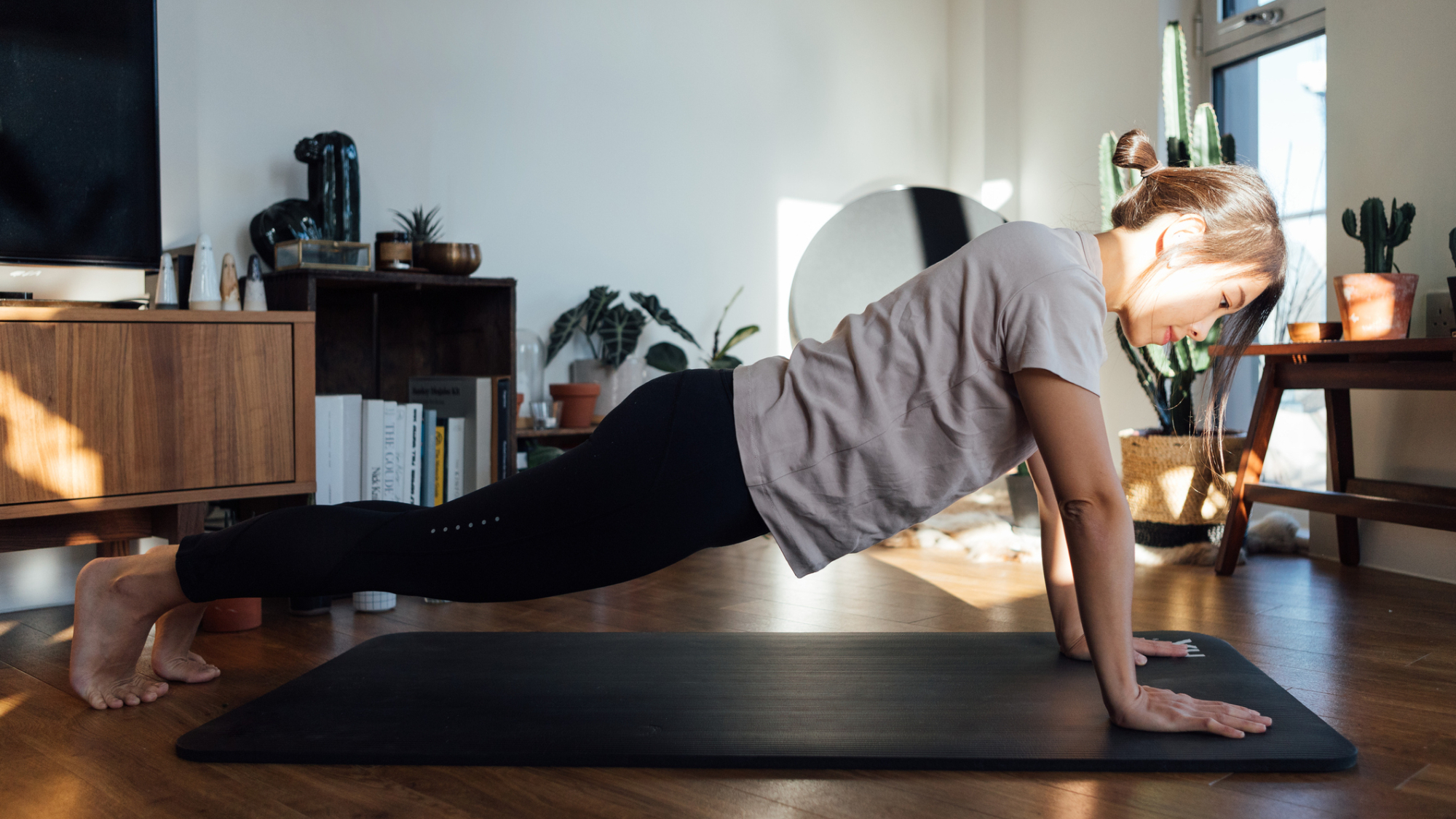
Sets: 4 Reps: 10
- Assume a high plank position, with your weight spread between your hands and toes. Your body should form a straight line from your head to your heels.
- Keeping your core tight and your elbows tucked into your sides, lower your chest towards the floor.
- When your chest is nearly touching the floor, drive through your hands to push yourself back up to the starting position. If this is too difficult, try dropping your knees to the floor.
5. Diamond push-up
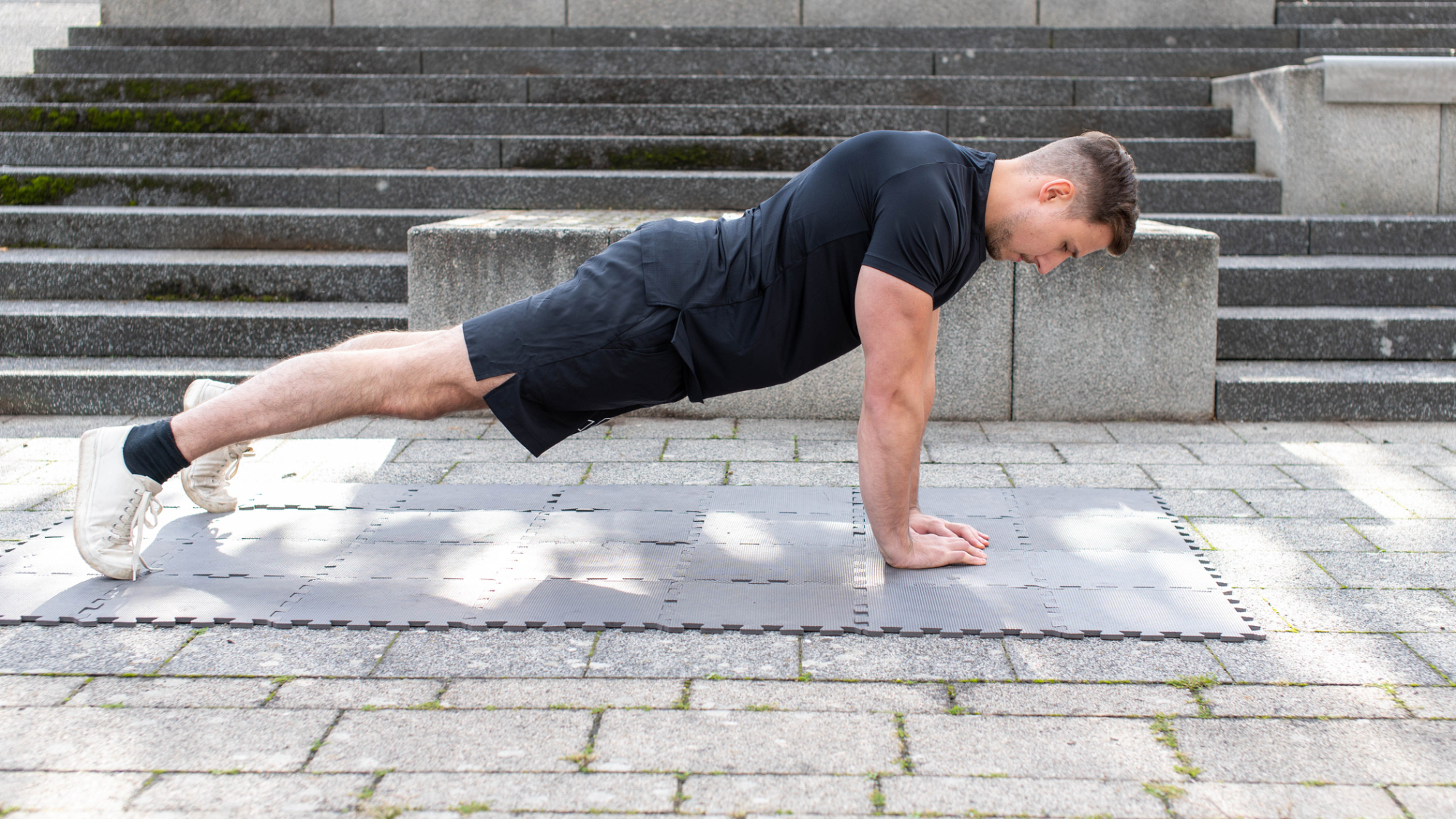
Sets: 4 Reps: 10
- Start in a high plank position, but instead of your hands being directly beneath your shoulders bring them together and form a diamond shape with your thumbs and forefingers.
- Bend your elbows to lower your chest until it's about an inch from the floor,
- Drive through your hands to push yourself back to the starting position.
6. Mountain climber
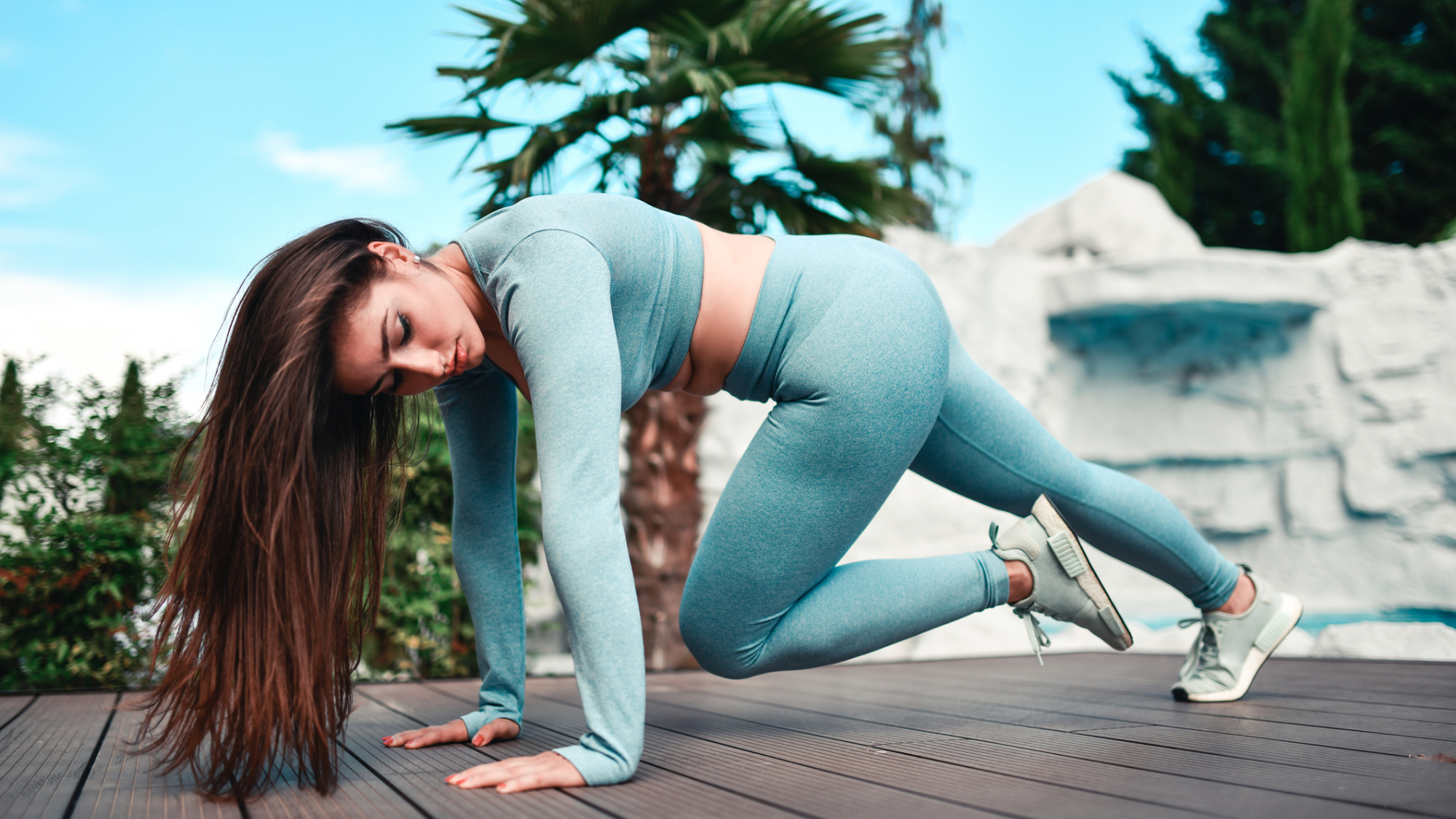
Sets: 4 Reps: 15 each side
- Get into a high plank position, with your weight spread between your hands and toes. Your hands should be directly beneath your shoulders.
- Drive your right knee towards your chest, then return to the starting position. Repeat on the other side.
7. Plank
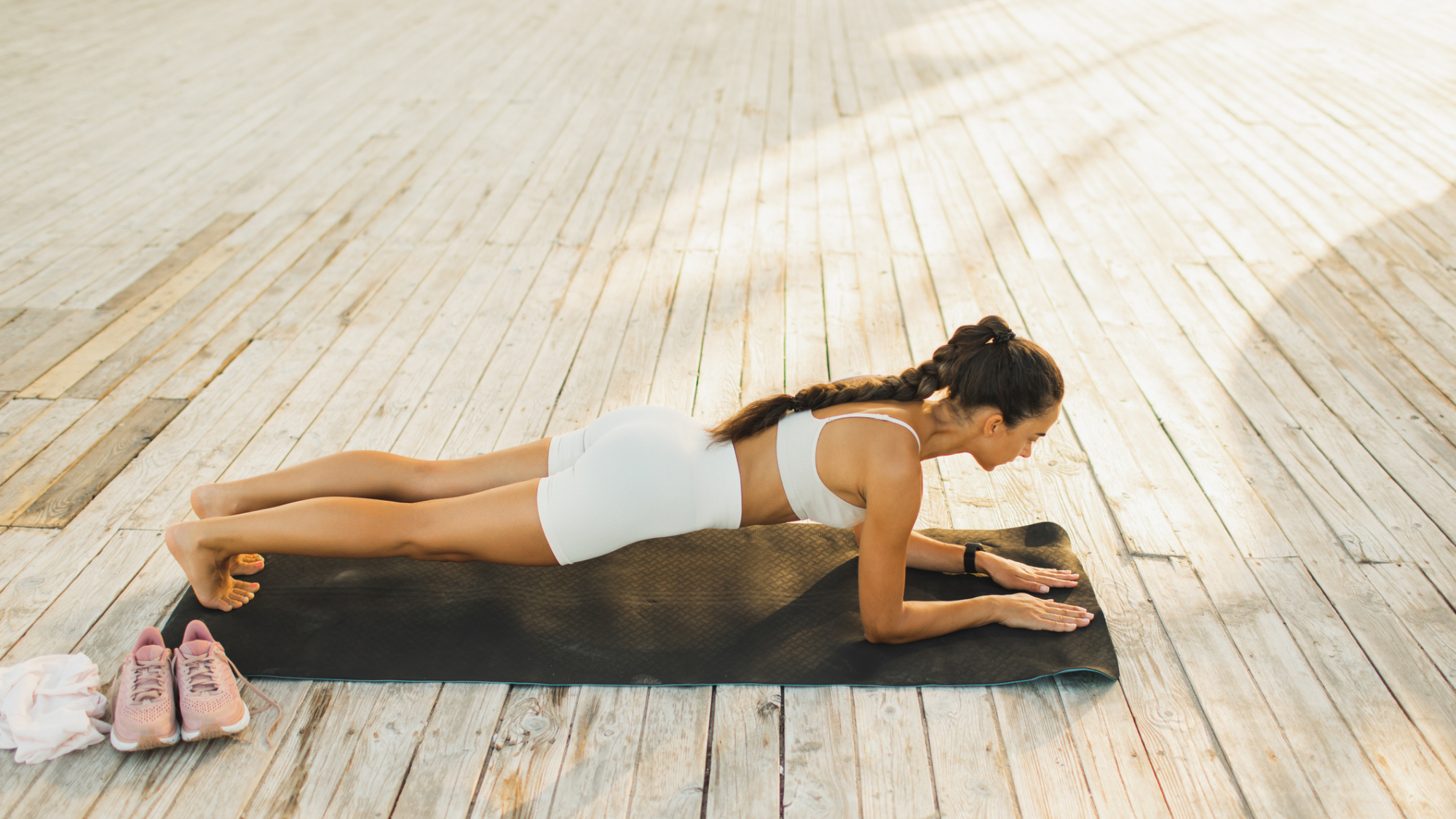
Sets: 4 Reps: 30-second hold
- Get into a plank position, with your weight resting on your forearms and toes. Brace your core. There should be a straight line from your head, through your back and legs, to your heels. Hold this position for 30 seconds.
Cool-down
- Cross chest stretch x30 seconds
- Overhead shoulder stretch x30 seconds
- Toe touch x30 seconds
- Kneeling quad stretch x30 seconds
Hold these four static stretches after finishing your workout.
"Static stretching is what everyone typically thinks of when you talk about stretching," Angelino says. "It’s the type where you hold a part of your body in a fixed position for a fixed period of time."
Is it better to work out at home or at the gym?
It can be beneficial to have a whole gym's worth of equipment at your disposal when you're working out, especially if you've been strength training for some time. The abundance of tools can help you work your muscles in new ways and bust through training plateaus.
But, for beginner lifters in particular, minimal (if any) fitness gear is actually needed to make strength gains.
"Working out at home is easier, more affordable and more convenient for most people," says Angelino.
"While training with certain equipment and having access to a variety of different weights will improve the quality of your training, training quality should come second.
"It doesn’t matter how effective your training is if you create a plan that you won’t actually stick with."
Instead, he suggests trying to "make the best of both worlds" by optimizing your home workouts to be as beneficial as possible.
Need some new gym shoes? Our guide to the best cross training shoes can help







